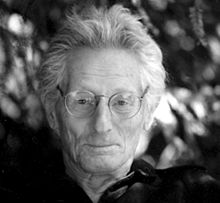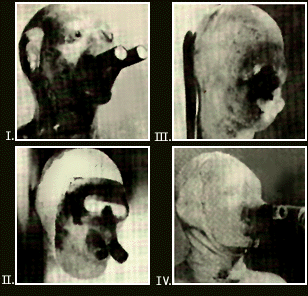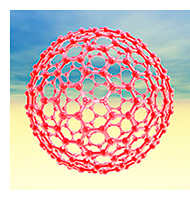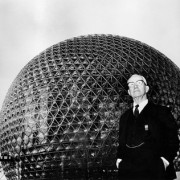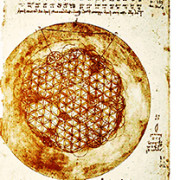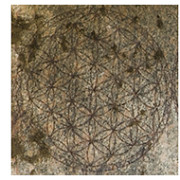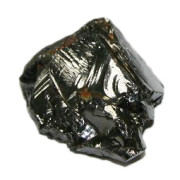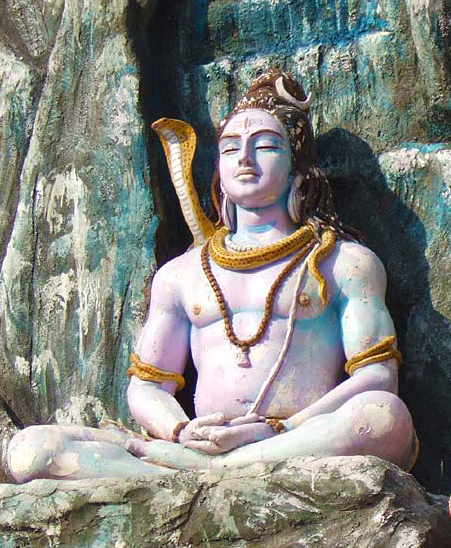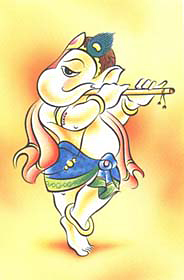
Phone Zombies
Dunk In, Tune Out, and Float Away. I woke up one day to find that my daily life had grown electronically cacophonous. Multiple devices that I never turned off were keeping me hooked to instant updates about family, friends and the general diaspora; not to mention a deluge of news, social media, and hawking. My “break” from working on my computer was to open Facebook or the news. When I finally looked up from my iPad, faces were going by in the crowd, and everyone was looking down at their phones. People were texting even while crossing busy intersections; checking their messages during movies, and peeking at their devices during the course of normal conversations. Had I become one of them? I wondered. All of us (and me too), toting our noise with us wherever we went, staring at little blue screens, slaves to technology. When exactly did “sharing” become less of a selfless act, and more of a narcissistic one? “Watch me do something that you are not doing”. If you are not photographing, “sharing” it, and getting 20 “likes”, did it really happen? This was extreme disconnection from the present moment, and Ekhart Tolle was nowhere in sight.

Sitting Meditation
Lest we become beleaguered shells run about by a constant barrage of e-babble, it is necessary to invest real time in some form of self-induced stillness. Also, it’s pretty much mandatory if you have any wish to hear the still, small, inner voice of Truth. Not to mention for the sake of your sanity, health, creativity and even everyday decision-making. Being “constantly connected” is fun, but It can also start to steal your soul. I knew I had to do something.
My own meandering quest for inner stillness has taken me down some interesting paths, with varying degrees of “success”. I’ve chanted mantras until I couldn’t remember my own name, bent my body into Cirque De Soleil Hatha yoga poses, done Holotropic breathing until I hallucinated, and those are just some of my more mainstream consciousness-raising experiments. Learning how sit still and meditate has ironically been the biggest challenge of all. It turns out that besides the ambitious goal of spiritual enlightenment, meditation is simply good for our over active, reason-stuffed minds. My own personal best breakthrough as an adult came after a ten-day silent Vipassana retreat. But that was back in 2011. I needed a practice that I could do without becoming a temporary acetic or going nuts. Something gentle that I could fit into my daily life.
I’ve known about “sensory deprivation tanks” for at least the last fifteen years, or so I thought. Even though I had heard about many of the touted benefits (deep meditation, accelerated healing and drug-free magical mystery tours), I still secretly wondered, why would I (or anyone else for that matter) want to go and bob naked for 60 minutes or more in a pitch-dark, womb-like pod filled Epsom salt-saturated, warmish water? It sounded just a little alarming.

Getting Feet Wet
Cut to 2014, when our friend Randall casually mentioned that he’d been going to a float tank to help heal a neck injury after a bicycle accident. A little “ping” went off in my stressed-out head. The silence, weightlessness and rest that he described suddenly sounded a more like a vacation and less like a wacko science experiment. But where to find a tank and get my feet wet, so to speak?
If you wanted to try floating ten or more years ago, chances are, (even in trailblazing LA), you probably would have had to wheedle an invitation out of your best hipster friend to use his backyard unit, secretly hoping he’d recently changed the water. Nowadays, like the next big wave of the mainstreaming of yoga and meditation, there is a good possibility that a pristinely clean, well-maintained “float center” has cropped up somewhere near you.
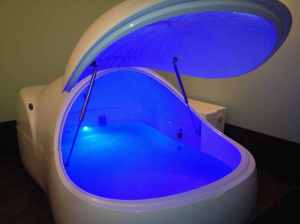
New Style Float Tanks
Looking on-line, I quickly found that no less than three float centers had opened in the greater LA area, and in fact they are popping up all over the USA, Canada, Europe, Australia and the Netherlands. Not your neighbor’s grungy tank, these current models are sleek, with high-tech filtration systems. Many of the new float centers are more like luxury spas, catering to people of all ages for all kinds of reasons. A lot of these offer opulent touches like meditation music piped directly into the units, as well as optional pastel lights to ease the sudden transition from traffic and mall shopping to complete darkness and silence. Some, (like LA Float Center in Woodland Hills, CA) even have oxygen bars with fruit or mint-tinged oxygenated air to inhale post-float.
When the need arises, the technology will come. Obviously the ‘Information Age’ has added a whole new rung of stress to the ladder. Research has shown that floating alleviates chronic pain and stress-related issues. It is well-documented that floating helps free people from compulsive

Beautiful Shell Tank
disorders, such as over-eating and other addictive behavior. It also accelerates healing, increases self-confidence and fosters general well-being. Not to mention the occasional drug-free, out-of-body experience. All by, well… doing absolutely nothing for 90 or so minutes in a weightless environment.
Do they really work? What is it like to float? The only way to find out was to do it.
OUR FIRST FLOAT EXPERIENCES:
Did I mention that I was claustrophobic? I do not like small elevators. Standing in my closet finding clothes makes me anxious, and the first time I heard about the float tank, I said to myself, “Ha! Not EVER gong to do that.” Tight rope walking across the Grand Canyon seemed like it would be a more likely scenario than me getting inside a salt-water filled, completely sound and light-proof, travel case for sensitive marine life samples.
However, I remained cautiously curious. My yogic experiments have at least taught me what it feels like to finally let go of one’s tangled thoughts, if even for a moment. During those rare, fleeting flashes of clarity, bliss, and quantum leaps of understanding, I have always made a pact with myself to find ways to get even more unknotted. I know enough to at least know what seasoned meditators are after; if one can enter a condition of waking dreamlike stillness, it has the power to transform your life and help you go beyond the limited notion of self. It is an extremely liberating state. So, when I found that a float center had opened nearby, I did the courageous thing and booked an appointment for my husband.

Star Fleet Shuttle
I went along too, not sure until the last-minute that I would actually get inside the thing. The first float is usually a kind of orientation to the process, the unconventional wisdom being that you need to go a few times to get the hang of it. We both chose some beautiful, Indian style, meditation music and entered our private rooms. Once inside I beheld what looked like a fiberglass mock-up of a Star Fleet Shuttle filled with water.
You have a few minutes to shower off before entering the pod. The filtration systems are very good, but it’s essential to wash before entering to keep oils out of the tank, and then afterwards to remove the salt solution from your skin. Earplugs serve to further quiet the experience and keep salty water from seeping into your ears.
Almost immediately, my husband opted for total dark and quiet (he reported to me afterwards) finding the music and light a distraction. Not quite as intrepid, I lay back in the water and quickly pressed the button to turn off the pastel ambient light, but left the music playing. As I began to relax in the dark I felt my body start to adjust to weightlessness.
At the same time, I experienced odd, violent itches on my neck and legs which seemed too deep under my skin to have anything to do with Epsom

Red Glow Float Tank
Salts. There was an initial disorientation as my mind grasped for “things” to hold onto. Every noise seemed bizarrely loud; my heart thumped like a shaman’s drum, my breathing sounded like Darth Vader, and the music was almost painful as I could hear every note and beat with incredible clarity. Deprived of outer sensory play, my mind raced to “think” about things…anything. Am I hearing a clarinet? Did both my grandmothers have blue eyes? I saw every detail of a red Flexible Flyer sled I had when I was ten. Random images from childhood flashed across my brain with no apparent connective tissue. My neck and shoulders felt very strange and somewhat out-of-joint. I interlaced my hands behind my head as the helpful person at the front desk had advised us. Eventually, the odd sensations and racing thoughts subsided. Layer after layer of high alert tension peeled away like skins off an onion. The space around me suddenly expanded out as if for thousands of miles. Far from claustrophobic, I felt a tremendous sense of freedom, like flying. Even in the blackness I was sure that I could see shining stars. Euphoria.
DIMENSIONAL TRAVEL:

Azure Sky on an Alien Planet
Suddenly, I clearly felt and saw myself swimming up towards the surface of a huge body of indigo-colored water. I realized immediately that I was able to breathe even whilst submerged and felt no lack of oxygen. My husband swam next to me as we rose to the top together, finding ourselves in a beautiful, but totally alien place. The vast, violet sky around us was dimly lit by a golden orb that was like a very bright full moon in its luminescence. A pervading azure glow danced off the surface of gentle, lapping water, and touched the entire

Plants of Unknown Origin~Voynich Manuscript
landscape. Enormous flowering stalks, the size of eucalyptus trees but with bright dewy, succulent petals, grew straight out of a vast lake. These flower-trees were everywhere, resembling aloe plants, but soft as rose petals to the touch. We hovered in the water for a bit, looking all around. There was land nearby, but I felt no urgency to swim to it. Unusual creatures, that looked something like manatees morphed with lions, swam near us. They were very friendly and curious, coming close up and nuzzling, regarding us with large, soft eyes. About a quarter of a mile away, on the land, there were dwellings or temples made of white stone, shining iridescent in the half-light. I asked my husband if he knew what this place was. He replied that we were on a planet about midway between Earth and the galactic core. He said there were “so many wonderful places” he wanted to “show” me. I didn’t question how he knew this. It seemed that we were “us”, but in a different place and time where he possessed a great knowledge of things I knew nothing about.

White Temples on The Shore
I was completely stunned by this vivid vision, similar to a lucid dream, but I was not asleep! The sights and sounds were occurring with absolutely NO plant or chemical enhancement. I wanted to follow the thread of this enchanting and beautiful waking dream. I wished to go to shore and look around, but as soon as I tried to cling to it, stay on that plane of existence and deliberately explore, it vanished.

Plants of Unknown Origin~Voynich Manuscript
My neck and shoulders had relaxed considerably by this time and I felt that places of stuck energy in my body and psyche were being “shown” to me by an intrinsic intelligent force flowing through my body. My neck in particular held a solidified tension and muggle-type crispiness. I found that by simply focusing on a choked area, something beyond my rational understanding went to work on it, unraveling the thicket of crossed nerve wires, stuck emotions, and heavy caffeine levels. It was somewhat appalling to bear witness to how compacted certain areas of my body really had been. I had a certain amount of obviously misplaced feelings of immunity to these kinds of stresses because I practice yoga and swim. Alas, once inside the tank, I understood that my spine was more like a slinky pressed into travel mode than a serpent goddess unbound. I was also able to witness the level of unnecessary vigilance my left brain (logical, time-oriented), exerted over my existence in general.
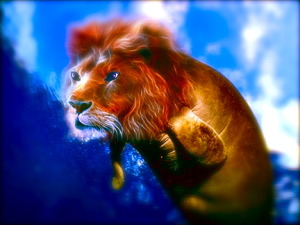
ManaLion
It seemed like only minutes had gone by and my hour and a half session was up. However, my appetite was thoroughly whetted for this new experience, albeit with heavily salted water. My husband, less prone to effusive excitement, especially over anything that takes place in a salon-type atmosphere, seemed quietly elated and a nagging issue with his hip was drastically alleviated.
Afterwards, the known world felt smoother and somehow less noisy. Immediately following my float, choices made in conversation, relationships, creatively, business or even shopping for groceries, were on target. I was “in the flow,” effortlessly led to the right motions and words at the right moments. It was only later on that I realized the shift in my state of mind from floating affected everything I did for the better. The friction was gone! Many of these effects lasted for at least a week, tapering off slowly. After two weeks, I felt the need to get back to the tank as soon as possible.
YOUTH IS A RELAXED BRAIN
I can only surmise that the cross-current of external events and mind-chatter takes us further and further from our authentic responses. Our surface, ego-mind begins to take over, making so-called “rational” decisions. Gradually, over the course of our adult lives, our choices get increasingly made based on information from external noise, and not from internal wisdom. When you completely quiet all that babble, even for short spans, you are able to listen to the sound of your own truth. Youth itself might be defined as the state in which your natural mind has not yet been polluted by outside influence. This is not in any way meant to dismiss education, learning and experience: rather to understand the stress placed upon us by faulty assimilation of competing data over a lifetime. Unable to hear our own genuine wisdom, we eventually loose contact with the sureness and courage of our youth. If there are no periods of complete silence, the body/mind will never fully digest the huge meals of information being sent its way. This is more true than ever in the ‘information age’. Consequently, many people suffer from prolonged intellectual and psychological “indigestion”.
No matter what you think you think, the real voice coming out of pure quiet from your core, always knows what is best for you. There are other ways to achieve this state of mind. Sitting meditation, hatha yoga, chanting, drugs and near death experiences, are some of the methods people have employed to profoundly quiet their minds. I tried all the above, except, thankfully, the last and have found that floating is the most effective method to get “there”, with the least amount of downside.
I am still plugged in to my many devices and communication systems. I admit it, I am an information junkie and I love gadgets. These days, as often as possible, I get into a float tank, immersing myself in silence for up to three hours at a time, and I emerge reborn. It is the greatest balancer for this noisy age that I’ve found short of flying to India and trekking to an ashram in the Himalayas.
Since that first hypnogoic vision, I have not experienced dimensional travel, although I fervently hope it happens again. Sometimes the real tank time seems monumentally uneventful. What always happens afterwards, no matter what, is at least a week or more of greatly enhanced clarity, general well-being and good decision-making. No other practice I have ever engaged in (and there have been a plethora of them) has ever given me such consistent and clear results. My advice? Get thee to a float tank!
“We had a Zen master who visited my lab once, and he asked to go in the tank for an hour. Most of his life he had meditated every day for four or five hours or more. And he thought the depth of meditation he reached in the tank was on par with a level he reached maybe once a year in his normal meditation environment—which was not exactly the middle of Times Square. He was amazed.” – Peter Suedfeld PHD
Please See: Three Part Series: THE LILLY PATH TO FREEDOM
Part 1 ~ EXPERIENCE
Part 2 ~ JOHN LILLY & THE HISTORY OF FLOATING
Part 3 ~ BENEFITS & TYPES OF FLOAT TANKS
Places To Float:
Highly Recommended:
LA Float Center 818-914-4887
http://lafloatcenter.com/
Floatation.Com lists many places to float worldwide:
http://www.floatation.com/wheretofloat.html
 pyramid tents. Float tanks might have easily never made it into mainstream use. But they did, in large part because Lilly, although often perceived as a fringe-dweller, grew his technology out of the grounded territory of traditional academics and scientific training. Ironically, thanks in part to the rigorous testing and experimentation of their military-funded roots, float tanks have soared well beyond sideshows from the ‘Conscious Life Expo’ and have continued to evolve and thrive. Like yoga, the reason for this is simply that they work.
pyramid tents. Float tanks might have easily never made it into mainstream use. But they did, in large part because Lilly, although often perceived as a fringe-dweller, grew his technology out of the grounded territory of traditional academics and scientific training. Ironically, thanks in part to the rigorous testing and experimentation of their military-funded roots, float tanks have soared well beyond sideshows from the ‘Conscious Life Expo’ and have continued to evolve and thrive. Like yoga, the reason for this is simply that they work.
